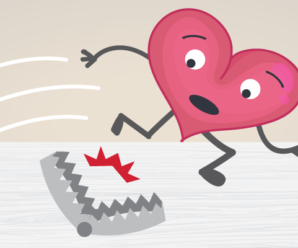
Editor’s note: This post was revised to clarify how sleep can offer migraine relief.
Headaches are common and can occur for different reasons. But certain types of headaches suddenly can happen and cause enough pain that some people have difficulty tolerating them. These types of headaches are known as migraines.
What makes a migraine different from a regular headache? Certain signs and symptoms separate the two and also can signal when a headache is much more than a migraine.
More than a “common headache”
A migraine simply is a type of headache.
Julie Smith, a child neurology registered nurse at Marshfield Clinic, says before a migraine is diagnosed, the provider has to evaluate the patient and see if he or she has what’s called a primary or secondary headache.
“A primary headache is what people are used to,” Smith said. “Migraines, tension headaches, and cluster and chronic daily headaches are primary headaches. It’s the secondary ones we really have to watch for because they have an organic cause. It can be an infection, trauma or problems in the structure of the brain.”
4 criteria that signal it’s a migraine
For a primary headache, there can be a number of causes. Most common causes include lack of sleep, skipping meals, overuse of caffeine, dehydration and lack of exercise. Doctors also should ask about stress.
For it to be a migraine, the headache has to meet certain criteria:
- The onset of pain is sudden and happens quickly.
- Headache pain usually is pounding or throbbing in nature and often is associated with nausea or vomiting.
- Light, sound or smell sensitivity can be triggers.
- Usually the pain will peak (comes quickly), and then will fall (ends).
Children also can get migraines, but they experience them differently from adults. Adults usually get migraines on one side, while children can get them on both sides of the head.
Sleep can offer relief
“I always suggest that at the onset of pain, take some medication and go to bed,” Smith said. “Sleep is the best thing you can do for a migraine.”
Sometimes, sleep isn’t an option. Using their best judgment, parents should encourage kids to attend school and help them learn how to work through migraines. Have a treatment plan in place so if your child does get headaches at school, he can lie down for 30-45 minutes to see if it gets better.
Other treatments that can help include taking acetaminophen, ibuprofen and other non-steroidal anti-inflammatories. Headaches and migraines also can be treated by eating regularly, avoiding caffeine and drinking plenty of fluids.
When it’s more than a headache or migraine
Smith said some headaches shouldn’t be ignored. These include “secondary” headaches.
“If you have a headache that’s so severe it’s the worst headache you’ve ever had in your life, go to the doctor immediately,” Smith said. “Also, go if you have visual changes, your speech is slurred, or you experience signs of other neurological problems.”
Fever accompanied with neck stiffness, a constant headache with vomiting and differences in gait and speech also are signs you should go to the doctor.
If your child is complaining about a headache and is under age 5, or if your child is waking up with headaches and vomiting profusely, go to the doctor.
“There could be underlying structure abnormalities, or an infection such as meningitis or encephalitis,” Smith said. “So it’s better to be safe and get it checked out.”
If you have headaches or migraines, or if you think it’s more than a headache, contact your doctor and schedule an appointment.






Leave a Reply